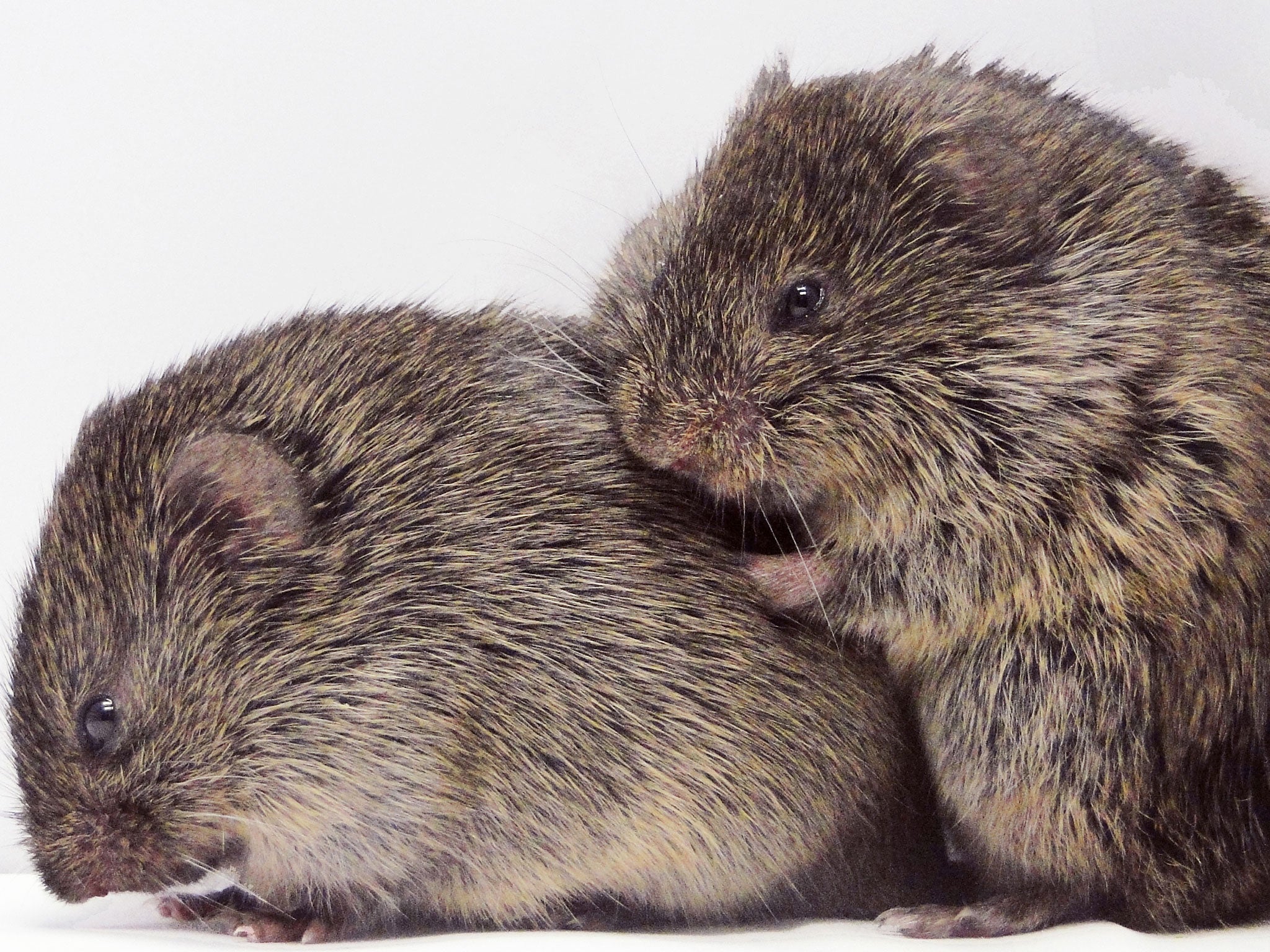Prairie vole: Mouse-like creature 'capable of showing emotional sympathy'
Study finds they will console one another by grooming when one individual is observed suffering from painful distress

Feelings of empathy between individuals are shown in humans, apes and elephants and now scientists have found that a small rodent called the praire vole is also capable of showing emotional sympathy towards less fortunate members of their group.
Empathy is considered to be one of the higher emotions because it suggests a certain level of cognitive awareness about another individual’s pain or discomfort, so researchers were surprised to find that it existed in a small-brained mammal.
A study on praire voles, which are monogamous and mate for life, found that they will console one another by grooming when one individual is observed suffering from painful distress – a behaviour previously thought to be unique to a small number of highly intelligent species such as chimpanzees.
The findings could further the understanding of the fundamental role played by empathy in certain psychiatric conditions such as schizophrenia or developmental disorders such as autism, where empathy is lacking, the scientists said.
“Many complex human traits have their roots in fundamental brain processes that are shared among many other species. We now have the opportunity to explore in detail the neural mechanisms underlying empathic responses in a laboratory rodent with clear implications for humans,” said Larry Young of Emory University in Atlanta, Georgia.
The study investigated the behaviour of prairie voles when individuals were exposed to small electric shocks. A second prairie vole who witnessed its cage mate suffer would later groom its partner longer than usual, apparently to reduce the other vole’s anxiety, the scientists found.
The study, published in the journal Science, found that blocking the part of the brain that responds to the hormone oxytocin – sometimes known as the “love hormone” because of its role in pregnancy and birth – also blocked this empathic behaviour.
Studies on humans have shown that the same region of the brain, called the anterior cingulate cortex, is also activated when one person sees another individual in pain. The researchers believe the brain mechanism in prairie voles may have the same evolutionary origins as the empathy system in humans.
“Scientists have been reluctant to attribute empathy in animals, often assuming selfish motives. These explanations have never worked well for consolation behaviour, however, which is why this study is so important,” said Frans de Waal, a co-author of the research and expert on empathy in primates.
Some researchers have suggested that the emotion of empathy has evolved from the more universal maternal instinct to care for one’s offspring. This could explain the role of oxytocin, which is involved in the bonding between mother and offspring in many animals.
The findings show that oxytocin works in the same brain region in both humans and prairie voles during consoling behaviour in both males and females. Like humans, both sexes in prairie voles help to rear their young together.
The scientists said: “Observing consolation behaviour in a laboratory rodent under reproducible conditions would allow for empirical research on causal biological mechanisms relevant to human mental health.”
The study was funded by the US National Institute of Mental Health and the US National Institutes [correct] of Health.
Subscribe to Independent Premium to bookmark this article
Want to bookmark your favourite articles and stories to read or reference later? Start your Independent Premium subscription today.

Join our commenting forum
Join thought-provoking conversations, follow other Independent readers and see their replies